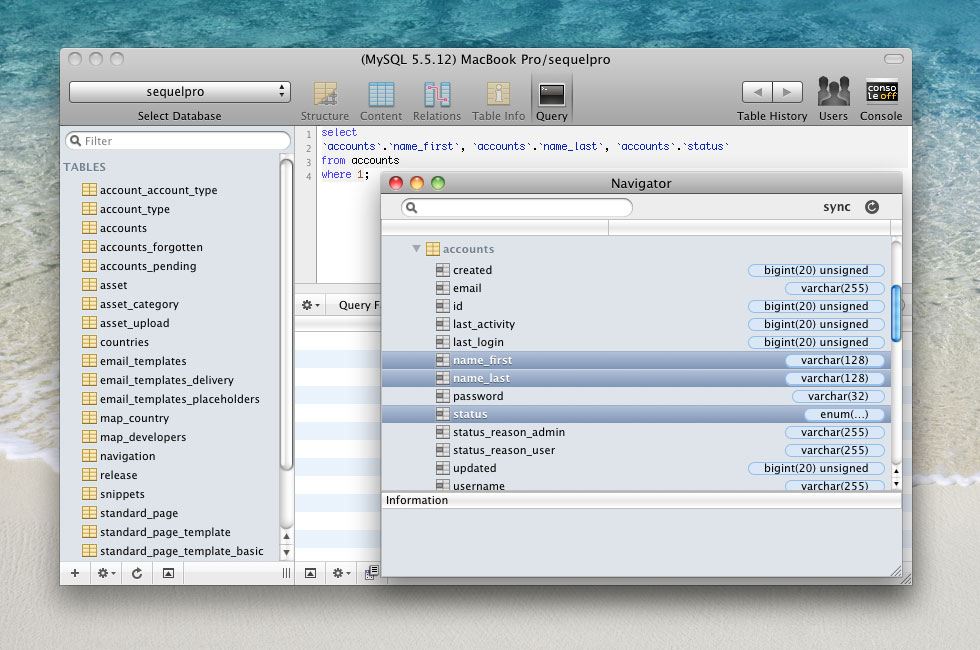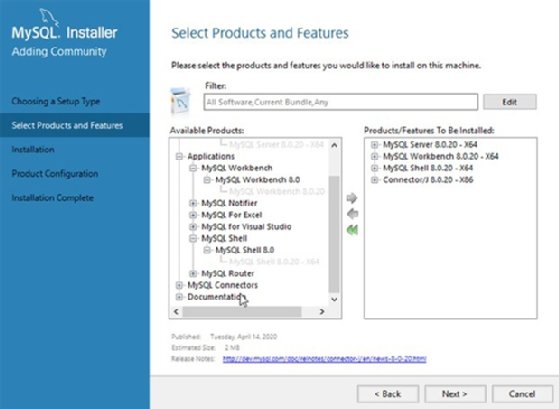

- #CLEAN INSTALL MYSQL MAC OS X HOW TO#
- #CLEAN INSTALL MYSQL MAC OS X FULL#
- #CLEAN INSTALL MYSQL MAC OS X CODE#
- #CLEAN INSTALL MYSQL MAC OS X FREE#
And they are not connected directly to the Internet.

However, the computers you and I use every day are not on web servers.
#CLEAN INSTALL MYSQL MAC OS X FULL#
Every time you visit a webpage, a server grabs information from a database (an actual building full of storage) and sends it back to your browser. That means you can build entire websites and see what they would look like online without being connected to the Internet.Īll the websites we visit online day in and day out run on web servers, designated computers that are programmed to do one thing: serve information from a database to your browser window. When these four components come together, they create a local web server on your computer only.
#CLEAN INSTALL MYSQL MAC OS X FREE#
Basically, it is a free application you can install on your Mac computer that gives you access to a local Apache server-and open source server. MAMP stands for Macintosh, Apache, MySQL, and PHP. I’ll break everything down step-by-step, with screenshots and additional articles you can turn to.

If this sounds overwhelming, don’t worry.
#CLEAN INSTALL MYSQL MAC OS X HOW TO#
#CLEAN INSTALL MYSQL MAC OS X CODE#
If there's no user and/or group called _mysql on your system, you can create them using the dscl command line utility, as described here.When I first started coding, one of the things I struggled with most was figuring out my “set up.” I wanted to know how exactly programmers get their code online: Where do they write it? How do they transition between building a site and making it live? Where do all the files live? Where do you make edits if you want to change a file that’s already online? I didn’t know at the time, but my question was really: “How should I set up my coding environment?”

Note that, after installing it like this, you won't be able to start the MySQL server with your username anymore, at least not without sudo -u. Sudo mysql_install_db -user=_mysql -basedir="$(brew -prefix mysql)" -datadir=/your/data/dir You can find out where your data directory is by looking for the entry datadir= inside /etc/my.cnf, or $HOME/.my.cnf, or $(brew -prefix mysql)/support-files/rver, then chown it accordingly.Īlternatively, you could start with a fresh data directory using mysql_install_db: unset TMPDIR Therefore the data directory must be owned by the user called _mysql or mysql as well. They say it's a good idea to have a dedicated UNIX user for the SQL server anyway. The preference pane attempts to start the MySQL server as user mysql or _mysql rather than running it with your user name. (this already allows you to stop the MySQL Server using the button in that preference pane – because it simply uses the mysqladmin binary – but not to start it) Install symlinks to Homebrew's MySQL installation in /usr/local/mysql: mkdir -p /usr/local/mysql cd /usr/local/mysql After googling my butt off, here's what I was able to find out:


 0 kommentar(er)
0 kommentar(er)
